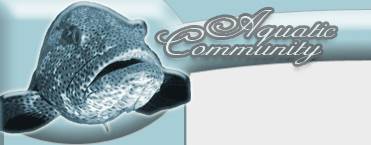Seahorse - Facts & Information

All seahorses belong to the genus Hippocampus in the family Syngnathidae. They share the genus Hippocampus with their close relatives the pipefishes. Both seahorses and pipefishes are popular in marine aquariums.
The members of the family Syngnathidae all share a common habit; the females will deposit their eggs in a brood pouch on the chest of their male partner. The male will fertilize the eggs inside his pouch and then carry them around and care for them until they hatch.
Seahorses might not look like traditional fishes, but they are true fishes of the class Actinopterygii (ray-finned fishes). Sea horses inhabit both tropical and temperate waters and are found in many different parts of the world.
There are over 30 described species of seahorse and many of them have been successfully kept by saltwater aquarists. A few examples of commonly kept species are Dwarf seahorse(Hippocampus zosterae), Longsnout seahorse(Hippocampus reidi), Spotted seahorse(Hippocampus kuda) and Tiger tail seahorse(Hippocampus comes).
A lot sea horse species are endangered or in the risk of becoming endangered in the near future, and it is therefore important to research the species you are interested in. The situation regarding which species that are legal to purchase and which species that are prohibited can change fast and it is always important to seek out current information instead of relaying on old recommendations.
Spotted seahorse(Hippocampus kuda) and Tiger tail seahorse(Hippocampus comes) are currently (2008) not considered endangered by the IUCN Red List of Threatened Species. They are however considered vulnerable, which means that there is a significant risk of them becoming endangered in the near future. For the Dwarf seahorse(Hippocampus zosterae) and the Longsnout seahorse(Hippocampus reidi) there is not enough data to know if there are endangered or not. More research is necessary before anyone can now. You can find current and updated information by visiting www.iucnredlist.org.
Several species of sea horse are today bred in aquariums and it is therefore possible to obtain seahorses without having to purchase wild-caught specimens. It is however important to keep in mind that it can be illegal to purchase captive breed specimens of endangered species unless they are accompanies by a certain type of certificate that proves their origin. It would otherwise be impossible to prove illegal trade with endangered species, since buyers would be able to claim that the seized specimens are captive bred regardless of their origin.
 Dragon Seahorse |
Keeping wild caught and captive bred sea horses in the same aquarium is a bit risky, because the wild caught ones can carry diseases to which the captive bred ones have little resistance. (Also keep in mind that disease can be transferred between seahorses and pipefish.)
Seahorse Articles:
Sea horses in Aquarium - An article about how to keep sea horses in aquariums.Lined Seahorse – A guide to keeping Hippocampus erectus
Common Seahorse – A guide to keeping Hippocampus kuda
Long Snout Seahorse – A guide to keeping Hippocampus reidi
